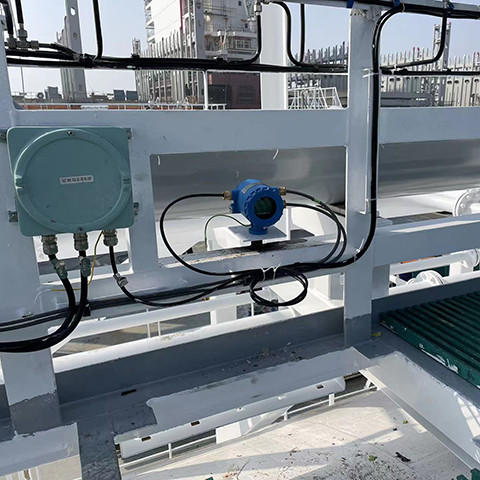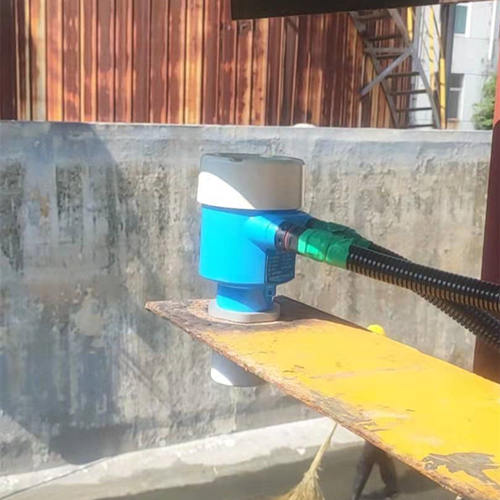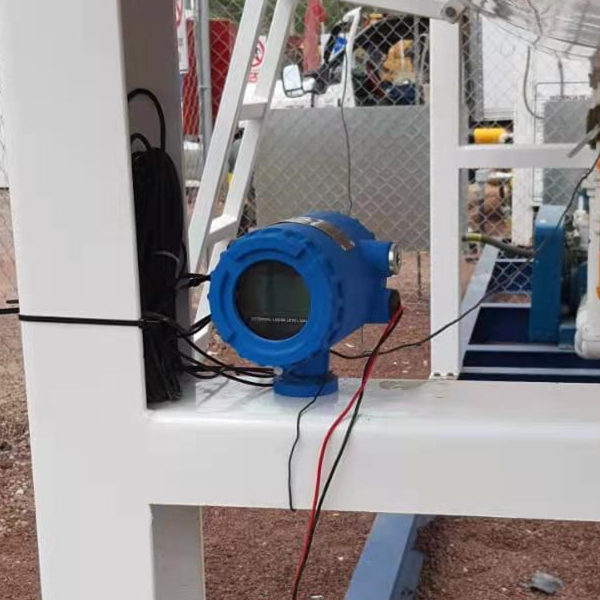Non-Intrusive Ultrasonic Level Gauge is tested on the side of LPG tank
1 This is the basic information:
| Diameter | Thickness | Length | Substance | Liquid l evel height |
|---|---|---|---|---|
| 2.7m | 15mm | 10m | LPG | 541mm |
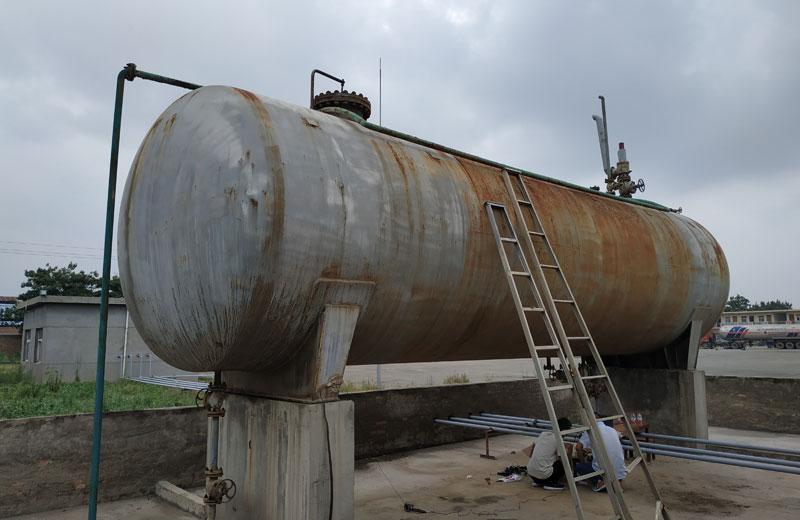
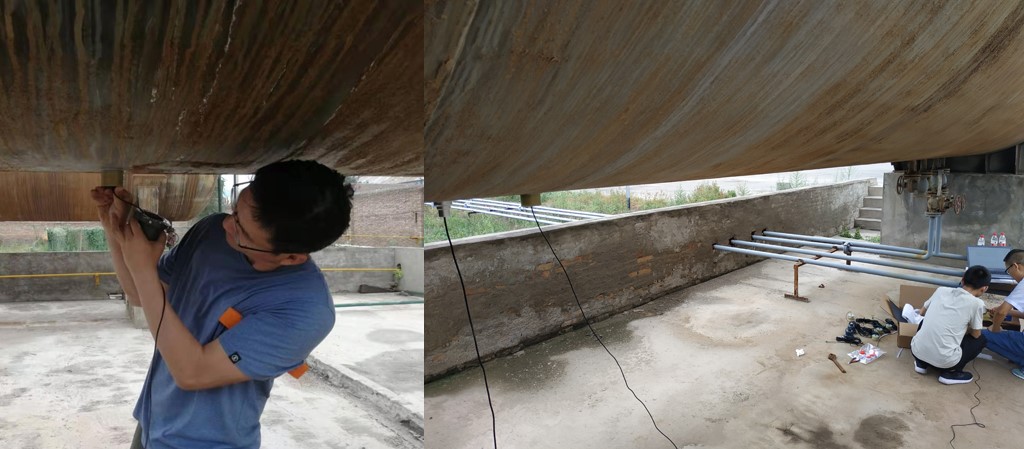
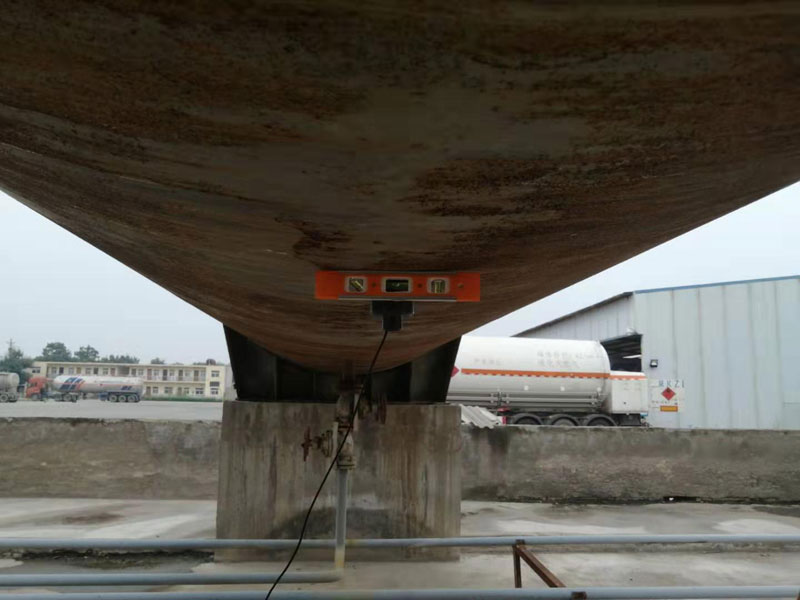
2 Test equipment: SK-WY03-45 (Non-Intrusive Ultrasonic Level Gauge)

3 Test equipment: SK-WY03-16 (Non-Intrusive Ultrasonic Level Gauge)

Level Gauge LCD Waveform Interface Description
① F(100~2000) work frequency
②G(0~96)work gain
⑫ BLxxx(Unit:mm)Blind area value
⑬ Lxxxx(unit:mm)level value
| SK-WY03-45 | |||
| #45 Probe | Center frequency: | 160k | |
| Measurement Frequency | Transmission Gain | Blind Area | |
| 200k | G1 | 72mm | Automatic debugging |
| 160 | G5 | 96mm | |
| 180 | G3 | 72mm | |
| 150 | G5 | 96mm | |
| 220 | G2 | 96mm | |
| 250 | G3 | 96mm | |
| SK-WY03-16 | |||
| #16 Probe | Center frequency: | 1000k | |
| Measurement Frequency | Transmission Gain | Blind Area | |
| 1000k | G7 | 40mm | |
| 500k | G12 | 56mm | |
| 800k | G13 | 65mm | |
| 1200k | G12 | 65mm | |
| 1500k | G18 | 45mm | |
| 1075k | G6 | 35mm | Automatic debugging |
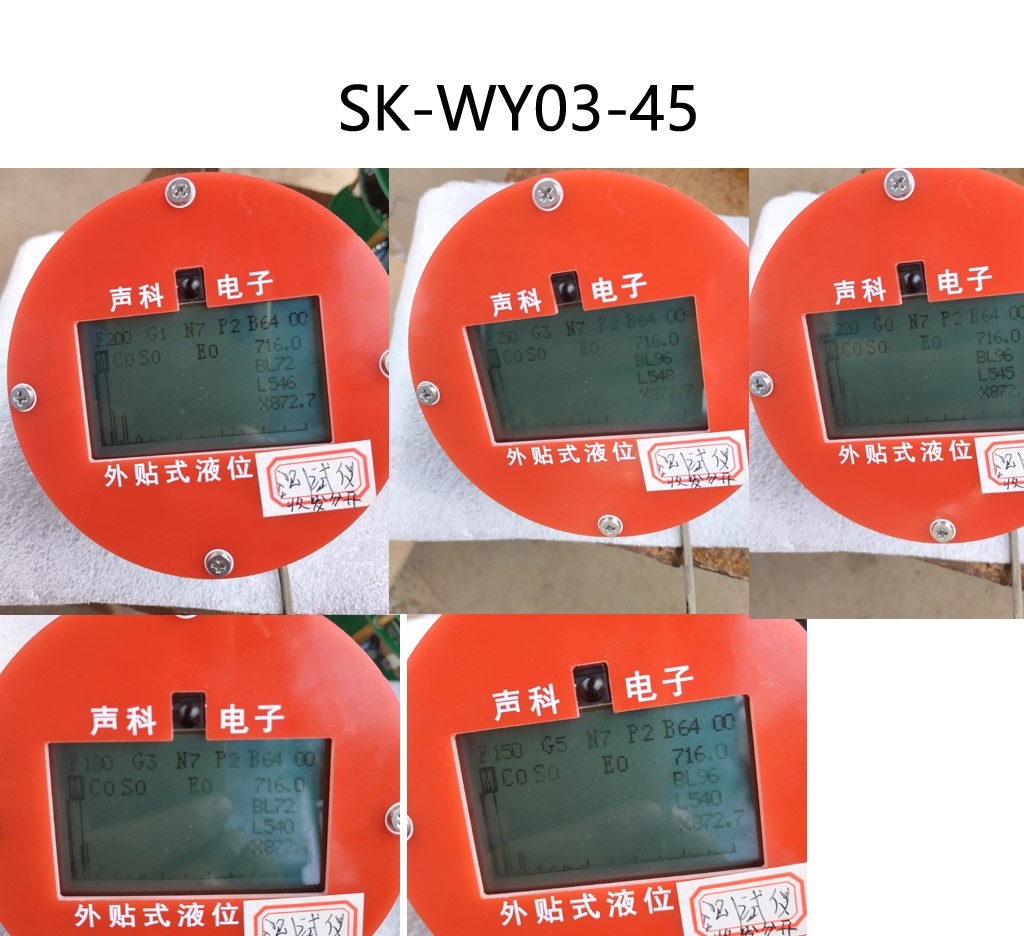
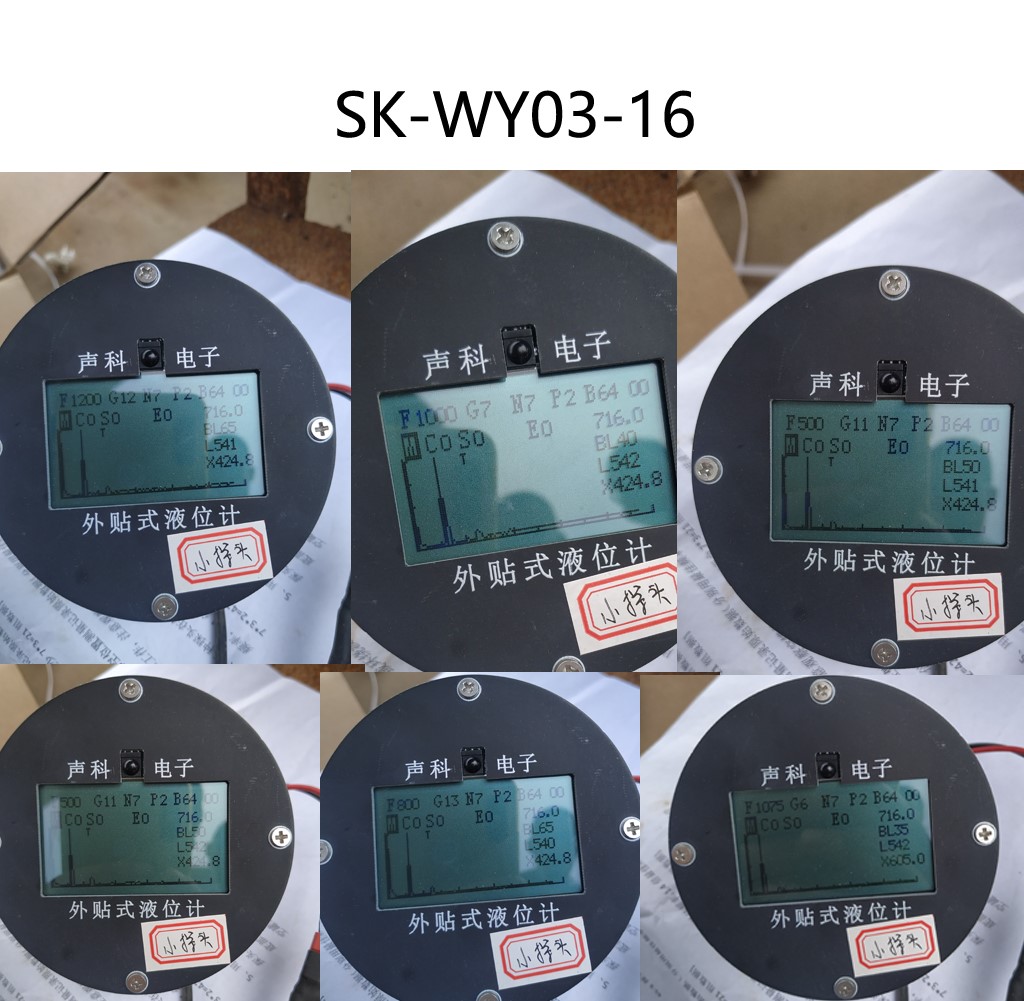
4 Conclusion
It is very important to install the probe.
Apply enough silicone grease and press the air between the base to make the probe perfectly coupled with the tank wall. This step is the most critical part of the installation.
Note: must be away from the inlet and outlet.
Working frequency: The best matching frequency range is the frequency around the center frequency of the probe. Too high or too low will make the gain larger and the blind area larger.
Probe operating frequency:
In addition to the central frequency of the probe, the thickness of the tank wall is also a factor.
Factors affecting accuracy:
Velocity of sound. Finding a matching sound velocity is very important for measuring accuracy. The operating frequency of the probe. Because the higher the frequency, the smaller the beam angle, better direction, but the range will be short.
Factors affecting blind area:
Probe operating frequency and velocity of sound. When the probe sends out the measured wave, it cannot receive the echo signal for a period of time because of its aftershock, which creates a blind area. Increasing frequency is a good way to reduce blind area. The slower the velocity of sound, the smaller the blind area.
The speed of sound can also affect blind area.
Tester and reporter: Zhe (zhe@skeic.com)

